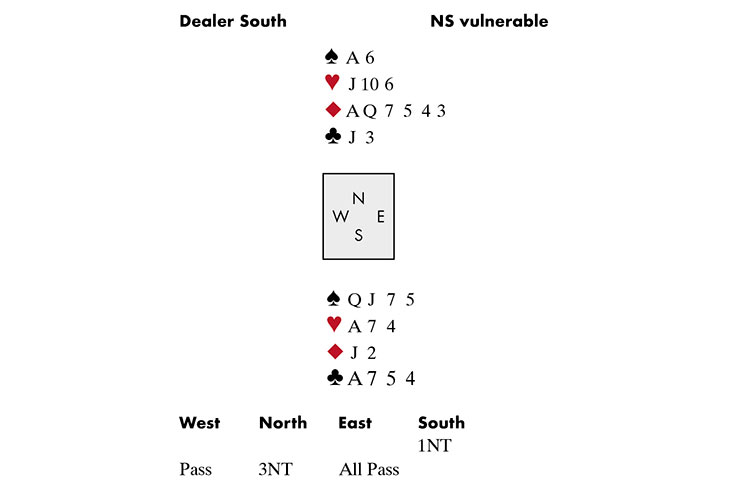What goes through a world-class player’s mind when he or she stops to think for an age during a hand? I always find it slightly humbling: are they calculating probabilities, spotting chances, and creating contingency plans that mere mortals would find hard to grasp? Almost certainly that’s true, but they’re also doing something else: sizing up their opponents. I’ve lost count of the times I’ve presented a declarer-problem to a top player, only to be asked: ‘Who am I playing against?’
Take this hand. When I asked David Gold how he would tackle the diamond suit, his immediate response was: ‘How good is my left-hand opponent? How good is my right?’ (see diagram)
The ♠10 is led. You play low. East wins with the ♠K and returns a spade to dummy’s ♠A. You now play a low diamond from dummy to your ◆J and it holds. You continue with a diamond towards the ◆AQ and West follows small. What now? Both defenders have played in perfect tempo. Obviously if East began with Kxx you have no chance.
Here was David’s reasoning. If East is a good player, he could well have ducked smoothly holding ◆Kx. But if he’s less experienced, you should assume he doesn’t hold ◆Kx, and finesse the ◆Q rather than play to the ◆A and hope the ◆K drops.
But what about West? Holding ◆Kxx, very good players would duck the ◆J smoothly. So if you rate West highly, that’s another reason to finesse the ◆Q. But if West is an average player, you should assume he doesn’t hold the ◆K and go for the drop.
And now for the really hard part: you need to balance your opinion of West against your opinion of East. If East is the weaker player, go for the finesse. If West is the weaker player — go for the drop! No wonder they sometimes take so long to think…






Comments